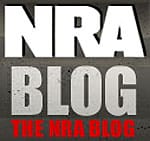Note: This article was originally posted on NRA Blog: https://bit.ly/2lnq9M0

USA -(Ammoland.com)- One of the biggest challenges hunters face is finding accessible land. With both private and public hunting lands available throughout the country, knowing the different types and rules for each can be complicated to understand. Essentially, there are lands managed by the government that are reserved for public use and conservation. Alternatively, many prime hunting spots lie on private lands, which aren’t always owned by the hunters themselves. Here is a breakdown of hunting lands and resources you need to review before heading into the woods:
Public Lands
With respect to hunting on federal lands, there are five agencies that manage them and are open to hunting. However, keep in mind that agency lands may come with certain restrictions.
Bureau of Land Management (BLM): BLM public lands are found in the western states. They are open to hunting unless specifically closed.
U.S. Forest Service: National forests throughout the country are open unless specifically closed to hunting.
U.S. Fish and Wildlife Service: The U.S. Fish and Wildlife Service’s National Wildlife Refuge System reserve lands for conservation, protection and enhancement of fish, wildlife and plants, and their habitats. Currently, more than half the refuges (530+) are open to hunting and fishing.
National Park Service: Hunting is not allowed in any unit of the National Park Service unless expressly allowed by Congress. A unit is a collection of properties owned or administrated by the National Park Service, such as parks, historic sites, reserves, battlefields, etc. There are roughly 60 units where hunting is allowed.
Army Corps of Engineers: The Army Corps of Engineers works to provide environmental sustainability across the country. The Corps reserves some lands for hunting, fishing, and trapping depending on the state.
These Federal agencies decide which lands under their management are open to hunting, but it is the state fish and wildlife agencies that set the seasons, bag limits, and permit requirements. Check the federal agency’s website for additional rules, regulations, or permits needed to hunt on their lands.
Private Lands
Hunting on private lands is at the discretion of the landowner, provided that allowing such activity is in compliance with zoning and any other laws. It is to be noted that a landowner has no ownership of wildlife on the property. Wildlife is held in trust for the public and managed by the state fish and wildlife agencies. Therefore, hunters on private property must comply with all state hunting rules and regulations, including federal requirements for hunting waterfowl (i.e. purchase of a Duck Stamp).
It is up to landowners whether they want to allow hunting on their lands. However, with the Agricultural Act of 2014 (aka the Farm Bill), landowners may participate in conservation programs that provide incentives to voluntarily open their lands for hunting and fishing.
If you are hunting on private lands which you do not own, it is a good idea to sign a Hunter/Landowner Agreement. This not only helps build strong relationships, but keeps both parties legally protected.
Hunting lands are available all across the country. Just be sure to understand your state’s hunting laws, rules and regulations for public land use, and/or obtain a signed agreement between you and a private land owner. For more information on hunting issues and your state’s laws, visit NRA-ILA.
Want to learn more about issues facing hunting lands? Check out this clip from NRA All Access that addresses concerns hunters are having with hunting land access.
